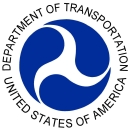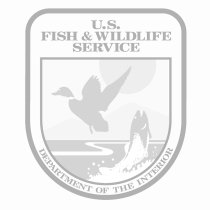Location
States
ArizonaEcosystem
DesertIntroduction
Prior to European settlement, bighorn sheep were common in the western U.S. Populations declined in the 20th century due to overhunting and the introduction of domestic livestock that exposed desert bighorn to exotic diseases and competed for limited forage in desert ranges. Through aggressive management, including reintroductions of desert bighorn sheep to historical ranges, the state’s sheep population has dramatically recovered. However, fragmentation of habitats and isolation of populations associated with human growth and development present continued challenges.
The Black Mountain desert bighorn sheep herd is the largest extant population of desert bighorn sheep in Arizona and has acted as a source herd for more than 25 capture efforts of hundreds of bighorn that were transplanted throughout the Southwest.
Key Issues Addressed
Rapid human population growth and development in the southwestern U.S., especially in Arizona, has led to increased habitat fragmentation for many wildlife species, including desert bighorn sheep. The sheep rely on connectivity between patches of suitable habitat to maintain genetic diversity among small, isolated populations and to access resources at various times of the year. Highways diminish connectivity of sheep populations and wildlife-vehicle collisions pose an additional threat to both humans and animals. Construction of wildlife crossing features, such as overpasses and underpasses, can improve safety for motorists while also minimizing the impacts of habitat fragmentation.
Desert bighorn were a focal species of concern in planning for the Hoover Dam Bypass project. The Arizona Department of Transportation and Arizona Game and Fish Department used empirical data to develop, evaluate, and fuse wildlife crossings into highway design to maintain and enhance desert bighorn sheep permeability and habitat connectivity prior to the expansion of this major travel corridor.
Project Goals
- Assess distribution and movement of sheep prior to overpass construction
- Construct overpasses and exclusion fences
- Monitor and evaluate overpass effectiveness
Project Highlights
Monitoring Success: Over a 4 year period after installing wildlife crossing features, the camera systems recorded 15,134 crossings by nine species. Desert bighorn sheep accounted for 94 percent of all animals documented at the structures.
- Pre-Construction Monitoring: Prior to overpass construction, a research team monitored the distribution and trans-highway movement of sheep in the study area for two years using GPS collars, ground observations, and tracking beds. This study showed that sheep crossing locations were not randomly distributed, but that crossing “hotspots” occurred where natural topography and terrain were favorable.
- Strategically-Located Overpasses: Pre-construction monitoring showed that bighorn were primarily utilizing elevated ridgeline areas for highway crossing, likely due to sheep’s preference for wide range of visibility. These naturally elevated areas were selected as overpass sites.
- Multiple Crossing Options: Crossing features included three wildlife overpasses with exclusionary fencing (7- to 8-foot high) to guide sheep to the overpasses and to additional drainage structures (three culverts and the dry washes under two bridges). The project included escape ramps to provide exits for sheep in the right-of-way (ROW), and double-wide cattle guards to minimize sheep ROW access at lateral roads and at on- and off-ramps.
- Effectiveness Monitoring: To measure the effectiveness of the wildlife crossings, researchers used 1) GPS collar relocation points to determine the newly constructed roadway’s influence on sheep movements; 2) video and still camera surveillance to establish the effect that structures and exclusion fencing had on sheep movements; and 3) sheep-vehicle collision data to verify the ability of the crossings to reduce sheep-collisions. These methods and the prior research data allowed researchers to determine the effectiveness of wildlife crossings and gain a better understanding of how various measures function together to address sheep welfare and motorist safety.
Lessons Learned
- After US93 wildlife crossings were added, the sheep population continued to cross the highway to access essential resources like water, while sheep-vehicle collisions declined by 97 percent from the preconstruction figure.
- Monitoring was essential in evaluating the efficacy of the wildlife crossings and provided timely data needed to make appropriate modifications and maximize the benefits of wildlife crossings. For example, exclusion fence breach points were identified and repaired during the first two years of monitoring, leading to a further reduction in sheep-vehicle collisions.
- 90 percent of the sheep crossings occurred at the overpasses, with far fewer sheep utilizing dry washes under the bridges and at the culverts. This is likely due to the sheep’s preference for wide-ranging visibility and ridgeline habitats. The cost of building the overpasses was less than the cost of alternatives (underpasses), so bighorn behavior is more compatible with the less expensive option.
- As the sheep adapted to the overpasses, passage rates (the percentage of sheep that crossed after approaching the structure structure
Something temporarily or permanently constructed, built, or placed; and constructed of natural or manufactured parts including, but not limited to, a building, shed, cabin, porch, bridge, walkway, stair steps, sign, landing, platform, dock, rack, fence, telecommunication device, antennae, fish cleaning table, satellite dish/mount, or well head.
Learn more about structure ) significantly increased from 28 percent in year 1 to 90 percent in year 4.
Next Steps
- Continue monitoring for roadkill sheep and if any occur take steps to identify the source of sheep entry and address
- Use lessons learned to inform other highway wildlife crossing projects. For example, the Arizona Game and Fish Department team involved in the US93 overpass assisted in design, construction oversight, and post-construction monitoring for wildlife overpasses included in the I-11 Boulder City Bypass Phase II on the Nevada side of the Colorado River.
Funding Partners
- Arizona Department of Transportation
- Arizona Game and Fish Department
- US Department of Transportation Federal Highway Administration
- Arizona Desert Bighorn Sheep Society
- US Fish and Wildlife Service Wildlife Restoration Program
Resources
- May 2017 ADOT Report: Evaluation of Measures to Promote Desert Bighorn Sheep Highway Permeability: U.S. Route 93 Long-Term Monitoring
- Jan 2014 ADOT Report: Evaluation of Measures to Promote Desert Bighorn Sheep Highway Permeability: U.S. Route 93
- Jan 2007 Report: US93 Bighorn Sheep Study: Distribution and Trans-Highway Movements of Desert Bighorn Sheep in Northwestern Arizona
- Highway 93 Bighorn Sheep Overpass Video
- Federal Highway Administration Wildlife Crossing Structure Handbook: Design and Evaluation in North America
Contacts
- Jeff Gagnon, Arizona Game and Fish Department, jgagnon@azgfd.gov
- Scott Sprague, Arizona Game and Fish Department, ssprague@azgfd.gov
- Chad Loberger, Arizona Game and Fish Department, cloberger@azgfd.gov
Case Study Lead Author
Ashlee Simpson, CART Graduate Research Assistant, University of Arizona
Suggested Citation
Simpson, A. C. (2018). “US Highway 93 Wildlife Overpasses: Promoting Highway Permeability and Safety for Desert Bighorn Sheep.” CART. Retrieved from https://www.fws.gov/project/us-highway-93-wildlife-overpasses.










